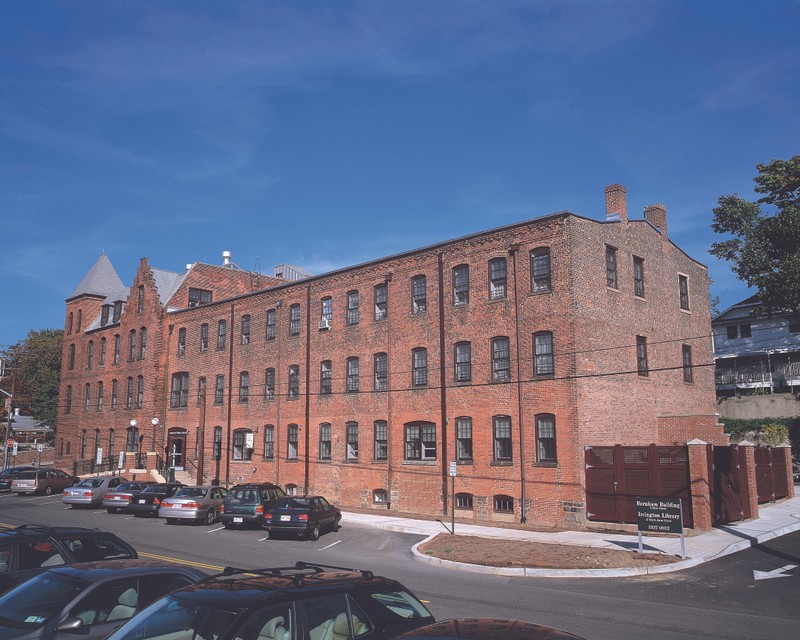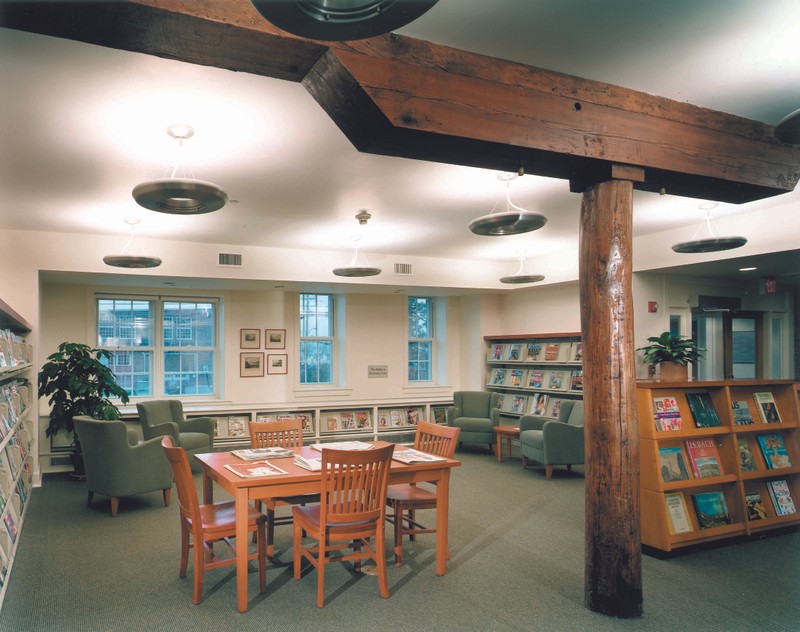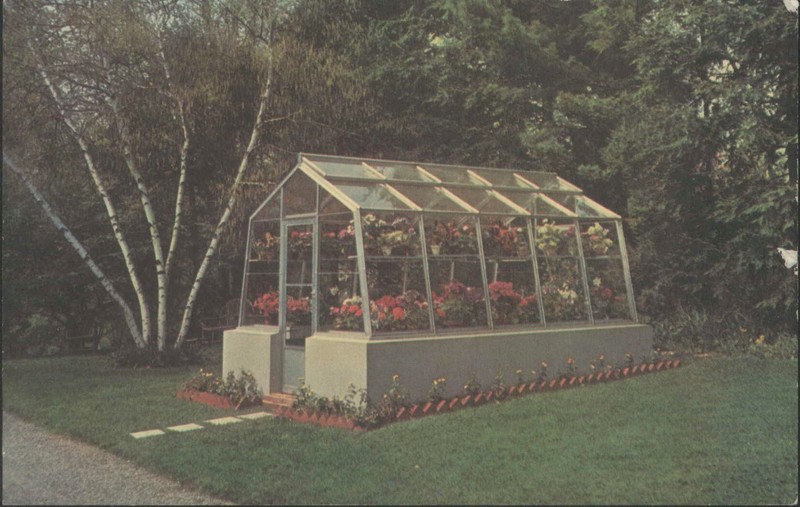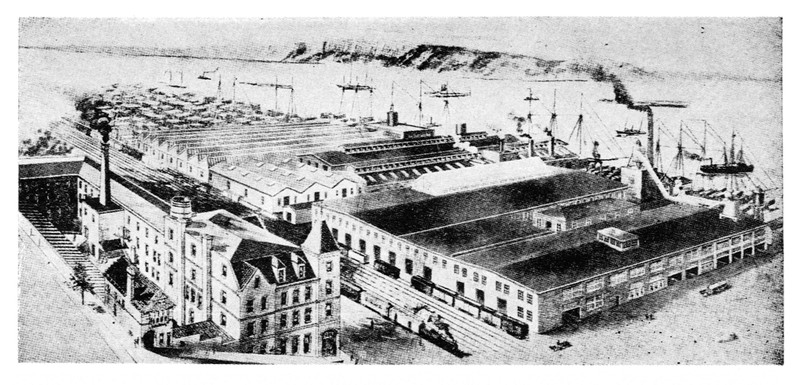Irvington Public Library
Introduction
Text-to-speech Audio
Now occupying the first floor of the Lord and Burnham Building on 2 Main Street, the Irvington Public Library shares the former office building of this greenhouse company with units of affordable public housing on the upper floors. The library moved to this location in 2000. It was formerly located in the village hall and now has expanded space.
Images
The Lord and Burnham Building, now home to the Irvington Public Library, 2000s

The interior of the Irvington Public Library, circa 2000s

An example of a Lord and Burnham greenhouse: they also made boilers in the past

Lord and Burnham building
.jpg)
Lord and Burnham building
.jpg)
Picture of industrialized Irvington

Backstory and Context
Text-to-speech Audio
The Irvington Public Library dates back to the mid-19th century when the library was established through the generosity of several Irvington residents. The original building was the “little red schoolhouse,” which underwent several evolutions.
With the construction of village hall in 1902, the library moved into the village hall due to a land donation made by the Mental and Moral Improvement Society on the condition that the village always maintained a library in the building. Several prominent local residents contributed to the project: the Tiffany family’s Louis Comfort Tiffany designed the space in the library, Helen Gould donated the furnishings, and Frederick Guiteau provided funding that went towards the collection of books.
Following its opening, the Irvington Public Library was incorporated by the New York State University’s Board of Regents on May 3rd, 1902. During its time in village hall, the library made small additions, such as a storeroom, closet, and a lobby expansion. The public library maximized its space, but with a growing town came a need for more space.
In the late 1990s, the Library Board concluded that a new library was needed to support technological innovations and accommodate people with disabilities. The Lord and Burnham Building was chosen for an adaptive re-use which required interior renovations as well as exterior renovations. Exterior renovations were completed in 1999 with the addition of a steel and glass structure to the rear of the building to accommodate an elevator and egress stairs. The library’s moved into its new space at the dawn of the new millennium on January 28th, 2000. The Irvington Public Library adaptive reuse balanced the original character of the Lord and Burnham Building while providing a new home for the public library. Some original elements were which reflected the industrial history and function of the Lord and Burnham Building. The Tiffany Reading Room in village hall has also been preserved by maintaining its turtle-back lanterns, tile mosaics, and ceiling beam carvings that were designed by Louis Comfort Tiffany.
Sources
Irvington Historic District.” National Register of Historic Places. United States Department of the Interior/National Park Service, November 29, 2013. https://npgallery.nps.gov/pdfhost/docs/NRHP/Text/13001095.pdf
“A Short History of Irvington Public Library.” Irvington Public Library. Accessed November 18, 2021. https://www.irvingtonlibrary.org/history/.
“Tiffany Reading Room.” Irvington Public Library. Accessed November 18, 2021. https://www.irvingtonlibrary.org/tiffany-reading-room/.
Williams, Gray. Picturing Our Past: National Register Sites in Westchester County. Elmsford, NY: Westchester County Historical Society, 2003.
Westchester County Historical Society
Westchester County Historical Society
Westchester County Historical Society
Westchester County Historical Society
Westchester County Historical Society
